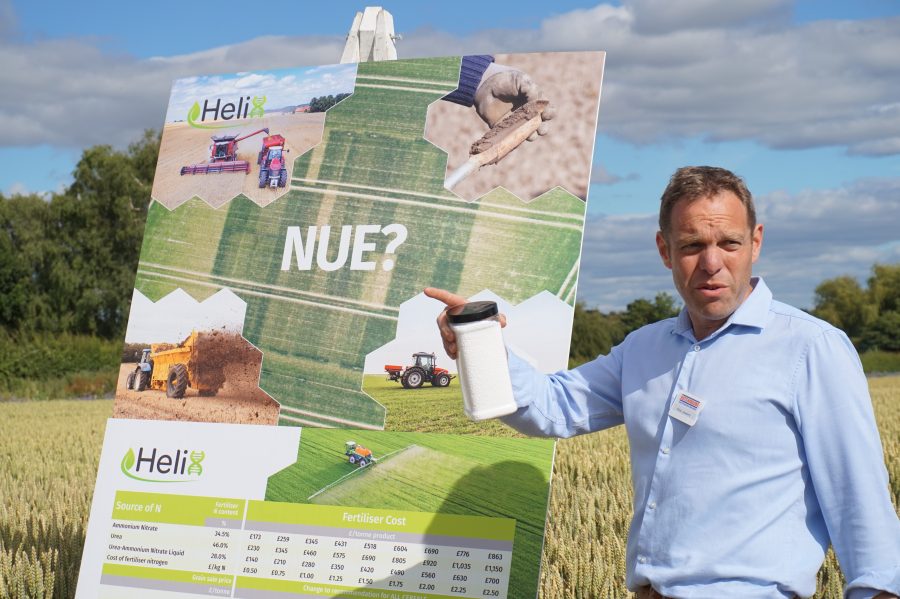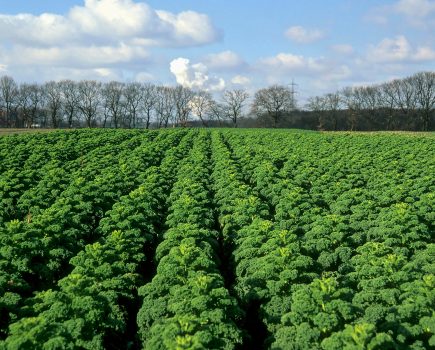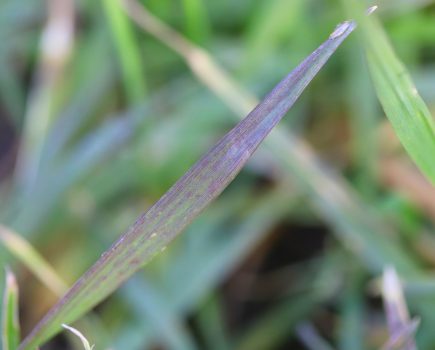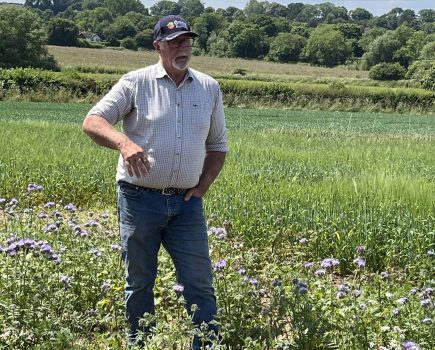Variable-rate nitrogen applications could be a valuable tool for managing uneven growth of winter cereals and oilseeds this spring, said Omnia digital farming manager, Aidan Monaghan.
While some crops sown before the weather broke last October have established well and show good potential, others struggled where seedbeds were compromised, or land suffered prolonged waterlogging or flooding, he says.
“There’s huge variation out there and some pretty sensitive crops that need managing carefully. Using variable nitrogen applications to even growth up and optimise yield potential has a much stronger role in a year like this.
“All winter crops can show a response from variably applying nitrogen, but the biggest benefits are when there is more variation. This year is almost the perfect opportunity for variable nitrogen, even if you’re already using variable rates elsewhere, such as for seed.”
Establishing a baseline
When planning nutrition strategies, Mr Monaghan recommends first establishing a baseline for each field and crop.
Omnia users are able to do this by accessing NDVI satellite imagery for any fields saved on the system.
“Satellites pass over frequently, providing a regular supply of new images throughout the year, provided the skies are clear enough. Even images taken when crops are relatively small coming out of winter can provide a useful starting point to show in-field variation before anything starts growing.”
Early mapping could also highlight any areas where crops have been damaged beyond repair and are better being re-sown, rather than receiving any further inputs, he adds.
NDVI maps can be further supported with results from Soil Mineral Nitrogen (SMN) testing, or later in the season, tissue, sap, or in-field chlorophyl tests. “It all helps build a picture of
Varying applications
There are different approaches to variable nitrogen, depending on the requirements of individual crops and field situations.
The traditional approach in winter wheat is often to variably apply the first couple of doses, upping rates on thinner areas of crop to build biomass, while cutting rates on thicker parts, to generate more even canopies.
However, because residual nitrogen levels this spring are likely to be lower than normal after the wet winter, which will have increased leaching losses, Mr Monaghan feels most fields will benefit from a good early nitrogen dose to get crops moving.
“The best approach might therefore be to apply a flat rate first, then vary the second application to even crops up, before tailoring the final nitrogen applications to the yield potential of specific areas of crop.”
Hutchinsons fertiliser and crop nutrition specialist Rob Jewers agrees, adding that most trials over multiple years show a clear benefit from “front loading” nitrogen at the start of the season to build biomass and support tiller retention during the crucial foundation phase. This then allows subsequent doses to be varied according to yield potential and end user requirements.
“It’s not just soil nitrogen that could be much lower this spring,” he adds. “Other nutrients are likely to be in shorter supply given how wet it has been, so there could be a strong case for using a nitrogen, phosphorus, potassium and sulphur compound fertiliser to give crops a bit of an all-round nutritional boost.”
Mr Jewers points out that NDVI imagery could be useful this spring for highlighting any areas of crop have that have failed to establish completely, or have been lost to flooding, before fertiliser is applied. Fields should be walked to double-check whether there is any viable crop remaining, and if not, application plans can be set so that no fertiliser is applied to bare areas.
However, saving fertiliser is not the main aim of variable rate applications, he notes. “It’s about using the technology to even-up crop growth through the season, tailoring inputs precisely to crop requirements to optimise yield potential.”
This can bring other management benefits, such as reduced lodging or more even harvesting, and help growers improve overall nitrogen use efficiency (NUE).
“Typically, NUE is around 55-60%, but a good target is 75-80%; any more than that and there is a risk that you’re starting to ‘mine’ the soil’s reserves. Omnia is a really good tool for helping you calculate the NUE for individual fields.”
The approach to variable fertiliser applications may be slightly different in oilseed rape, as crops often receive just two main applications, Mr Monaghan continues. “Providing there’s good establishment, I’d look to even crops up by variably applying the first dose, then adjust the second dose according to expected yield.
“The key is to establish that early baseline, then keep reviewing crops and their yield potential as the season progresses, using the NDVI imagery in Omnia, and any other information, to plan the most appropriate strategy.”
Simple setup
For farms not yet using variable fertiliser applications, Mr Monaghan says there is a relatively simple and cost-effective solution in Omnia Connect.
The system requires just a GPS-enabled iPad, an Omnia Connect WiFi connector, and associated cables, to allow any solid fertiliser spreader with a control box to do variable applications.
Variable rate plans are created in Omnia, then easily transferred via the cloud to an iPad in the tractor cab, which sends information to the spreader’s control box via the Wifi dongle. The system is easy to install and move between tractors if necessary, and is compatible with a wide range of machines.







